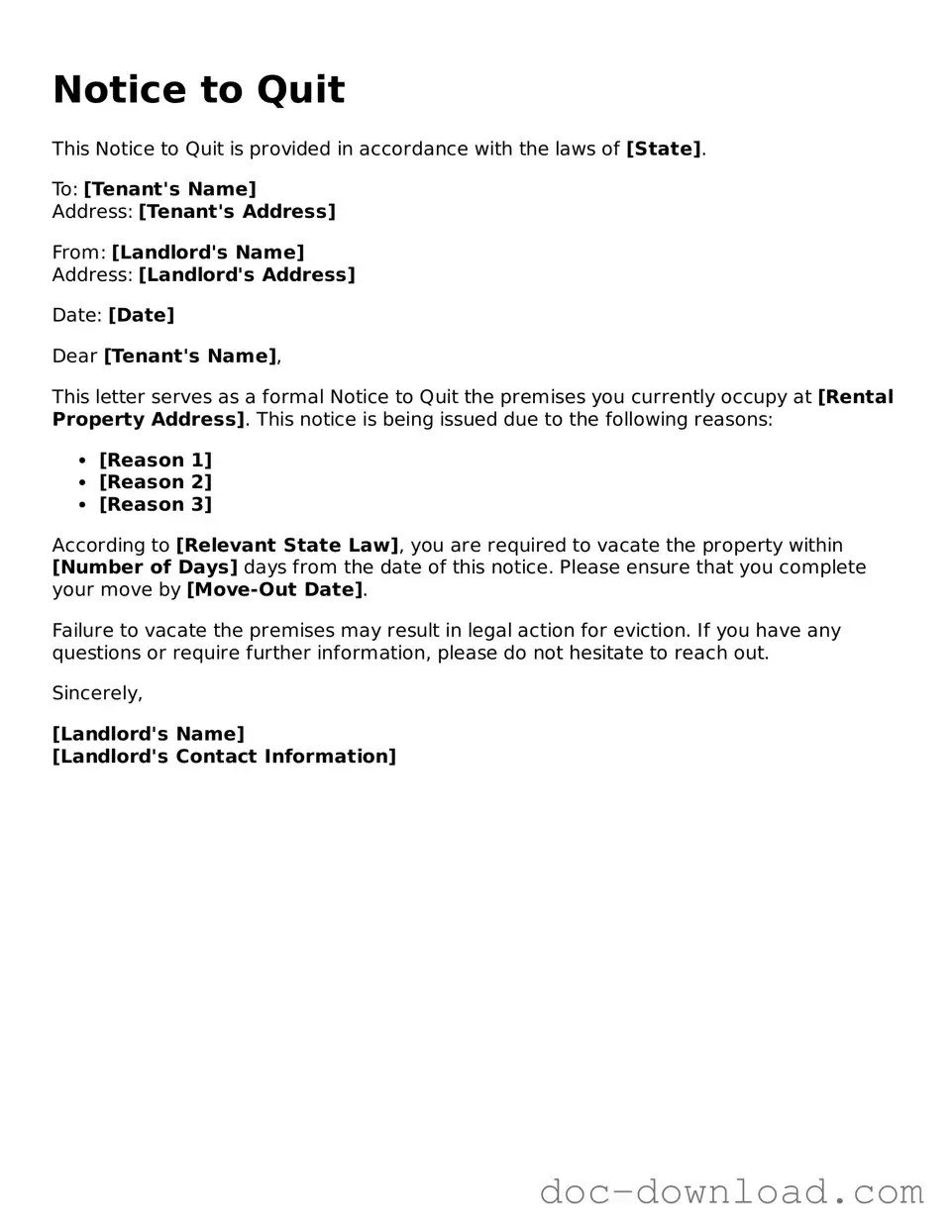The Notice of Termination is a document that landlords use to inform tenants that their lease will end. Similar to the Notice to Quit, it outlines the reason for termination, whether it’s due to non-payment of rent or lease violations. This notice typically provides a specific timeframe for tenants to vacate the property, ensuring that both parties understand the expectations regarding the lease's conclusion.
A Lease Termination Agreement is another document that serves a similar purpose. This agreement is a mutual understanding between the landlord and tenant to end the lease early. Unlike the Notice to Quit, which is often unilaterally issued by the landlord, the Lease Termination Agreement requires both parties to consent to the terms, making it a collaborative approach to ending the tenancy.
The Eviction Notice is closely related to the Notice to Quit. It is a formal notification that initiates the eviction process. While the Notice to Quit typically serves as a warning or request for the tenant to leave, the Eviction Notice is more serious and often follows if the tenant fails to comply with the initial notice. It may lead to legal proceedings if the tenant does not vacate by the specified date.
A Demand for Rent is another document that landlords might issue when tenants fall behind on payments. This notice requests immediate payment of overdue rent and may serve as a precursor to a Notice to Quit. It emphasizes the financial obligations of the tenant and can establish a timeline for resolving the issue before further actions, like eviction, are considered.
The 30-Day Notice is a type of termination notice that gives tenants a full month to vacate the property. Similar to the Notice to Quit, it communicates the landlord's intention to end the tenancy. However, the 30-Day Notice is typically used in month-to-month rental agreements, allowing for a longer transition period for tenants compared to other notices.
The Notice of Lease Violation is another important document. It is issued when a tenant breaches the terms of their lease, such as having unauthorized pets or failing to maintain the property. This notice informs the tenant of the specific violation and usually provides a timeframe to correct the issue before further action, such as a Notice to Quit, is taken.
A Rent Increase Notice is somewhat related, as it informs tenants of a change in their rental terms. While it does not directly request that tenants leave, it may lead to a decision to vacate if the new rent is unaffordable. This notice must comply with local laws regarding how much notice must be given before the increase takes effect.
For those dealing with property transactions, understanding the legal frameworks is essential, especially when using tools like a Quitclaim Deed. This straightforward document facilitates the transfer of property ownership without the complexities of warranties. If you're in Colorado and need to fill out a Quitclaim Deed, you can find a helpful resource at quitclaimdocs.com/fillable-colorado-quitclaim-deed.
The Notice to Enter is another document that landlords may use to communicate their intention to enter a rental unit. While it does not terminate the lease, it is similar in that it outlines the landlord's rights and the tenant's obligations. This notice ensures that tenants are aware of when and why the landlord will be entering their home, fostering transparency in the landlord-tenant relationship.
Lastly, a Security Deposit Return Notice may come into play at the end of a tenancy. This document details the return of the security deposit and any deductions that may be taken for damages. While it is not a termination notice, it is related to the conclusion of the lease and serves to clarify financial matters between the landlord and tenant.
